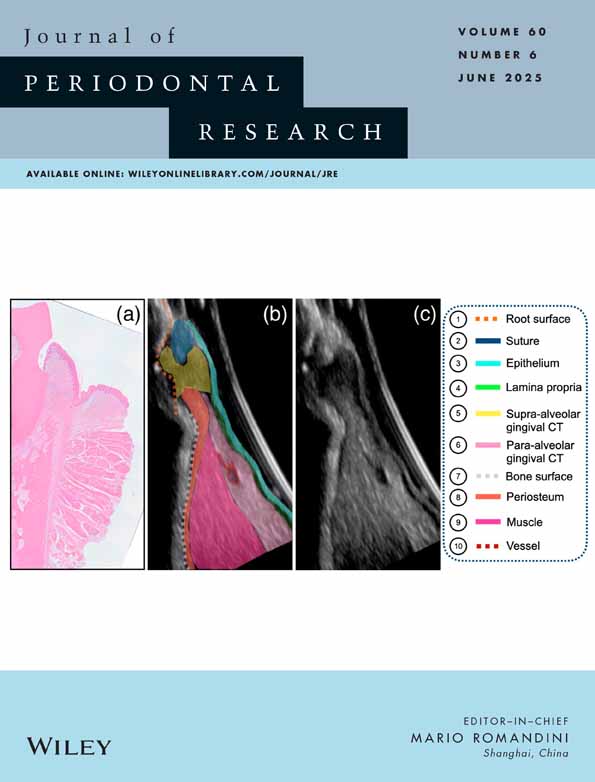Autoradiographic assessment of the distal response to gingival injury
Abstract
Twelve young BNL mice received a “gingivectomy” excising the gingival papilla mesial to the left maxillary first molar. Twelve additional young mice served as uninjured controls. One hour prior to sacrifice, each animal received a subcutaneous injection of 1 μCi H3-TDR per gm body weight. Animals were sacrificed 2, 4, 6, and 8 days after injury. At time of sacrifice, maxillae, femora, and a portion of abdominal skin were obtained from each animal for histologic and autoradiographic analysis.
In most tissues analyzed, the gingivectomy led to a significant reduction in labeling indices at tissue sites distant from the gingivectomy. This effect was short-lived, however, and could not be noted at time periods later than two days post-injury. Since such distal effects are of short duration, it is questionable whether they would affect therapeutic sequences currently used in periodontal treatment.




